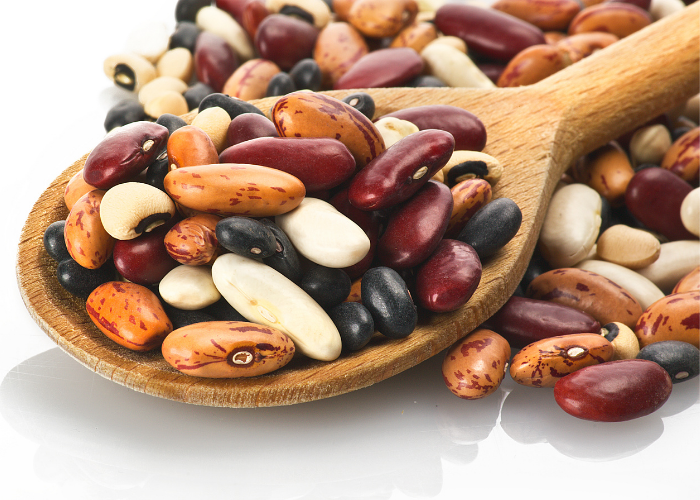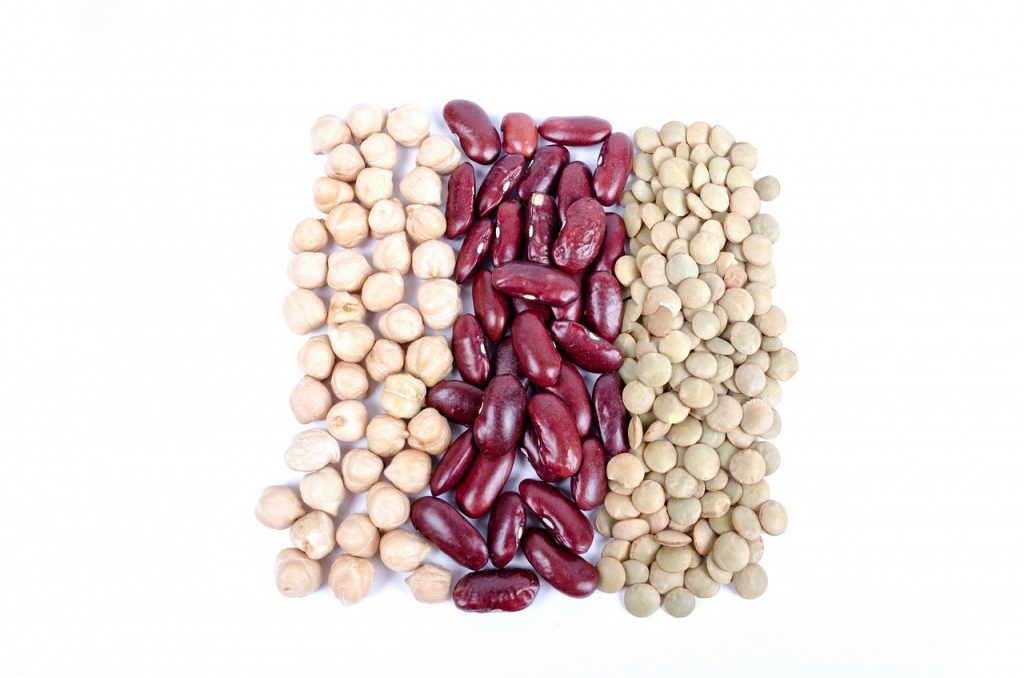Beans are an easy, delicious way to add fiber, plant-based protein, and other nutrients to your meals. Dry beans are part of the Leguminosae family, along with lentils, split peas, and soybeans.

Health Benefits of Beans
1/2 cup of cooked beans contains about 110-125 calories, 5-8 grams of fiber, and 7-9 grams of protein. They are also low in fat and rich in folate, iron, and potassium. Bean consumption has been associated with healthy weight maintenance and a reduced risk for chronic diseases.
Types of Beans
Beans come in dozens of colors, shapes, and sizes. Look for low-sodium canned varieties, or cook your own dry beans. Some of the most common varieties include:
- Black — these small beans have a strong flavor and pair well with spicy foods and intense flavors. They are very popular in Latin American cuisine.
- Cannellini — these are large, white Italian beans, known for their smooth texture. Commonly used in minestrone soup or salads, they also puree well for dips or sauces.
- Garbanzo — also known as chickpeas, these round beans are the key ingredient in hummus and are also tasty on salads and in soups.
- Red kidney — these dark red beans can be used in many types of dishes, particularly chili or bean salads. *Dry and undercooked red kidney beans may contain toxins. Make sure to soak and cook properly; it is recommended to not use a slow cooker with this type of beans.
- Navy — these small white beans can be used for soups, chili, or even salads, but one of the most popular uses is baked beans.
- Pinto — these are speckled beige and brown when dry, and cook to a pinkish-brown color. They are often used in refried beans and are also good in chili and soups.
Dry beans are a type of pulse. For more information on pulses, check out the American Pulse Association: https://pulses.org/nap/.

Did You Know?
Dry beans can be even better for your budget than canned, but they require some preparation. Follow package directions for quick-soaking or overnight (8-12 hours) soaking, then cook them on the stove or in a slow cooker or pressure cooker.
After cooking beans, use immediately, or fill containers and refrigerate or freeze leftovers for a quick, nutritious addition to your favorite recipe.
Beans are a great in many dishes, including:
- Burritos and tacos
- Chili
- Dips and spreads
- Rice dishes
- Salads
- Smoothies
- Soups and stews
- Stir-fries
- Veggie burgers
Beans can also be pureed and used as a substitute for cream in soups and sauces, or for some of the butter in baked goods like cookies!


